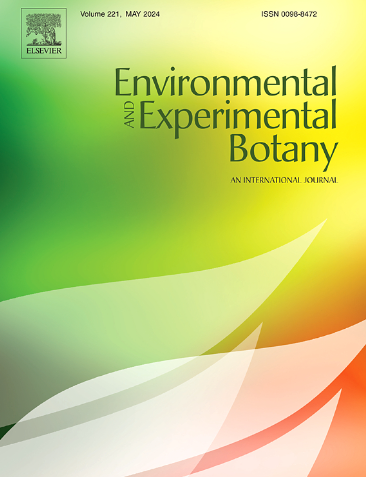改良光谱对番茄和芥菜植株镉吸收和根系分泌的影响
IF 4.7
2区 生物学
Q2 ENVIRONMENTAL SCIENCES
引用次数: 0
摘要
植物修复是一种广泛应用且有效的去除土壤中镉的方法。近年来的研究表明,在植物生长过程中改变光谱可以提高植物对重金属的吸收和耐受性。然而,不同光谱下植物物种间的差异及其对Cd胁迫的生化反应还有待进一步研究。本研究考察了高蓝/红光子通量比(B光)与全光谱白光(fs光)对番茄(Solanum lycopersicum)和印度芥菜(Brassica juncea)镉吸收、植物生理和根系分泌的影响。不同光照条件下番茄植株表现出明显的生理变化,B光导致根系Cd积累增加,生物量减少。对根分泌物的详细分析表明,在FS和B光条件下,cd诱导的代谢产物都产生了。镉诱导的渗出物包括甾体皂苷、番茄素和预测的螺烷三萜。光谱特异性渗出物包括氨基酸、萜烯、多肽、脂肪酸和苯丙素。这些代谢物在FS光条件下显著上调,但在B光条件下减少或不存在。芥菜受光谱变化的影响较小。B光照下,植物株高降低,但生物量和根系分泌物相对未受影响。该研究揭示了植物对B光和Cd胁迫的特异性反应,并强调了定制光谱在优化Cd植物修复和控制根代谢物分泌谱方面的潜在应用。本文章由计算机程序翻译,如有差异,请以英文原文为准。
Effect of modified light spectra on cadmium uptake and root exudation of tomato and mustard plants
Phytoremediation is a widely used and effective method for removing cadmium (Cd) from contaminated soils. Recent studies suggest that modifying the light spectrum during plant growth can improve their heavy metal uptake and tolerance. However, further research is needed to understand the variations among plant species and their biochemical responses to Cd stress under different light spectra. This study examined the impact of high blue/red photon flux ratio (B light) compared to full-spectrum white light (FS-light) on cadmium uptake, plant physiology, and root exudation in tomato (Solanum lycopersicum) and Indian mustard (Brassica juncea). Tomato plants exhibited significant physiological changes under different light treatments, with B light resulting in greater Cd accumulation in roots and reduced biomass. A detailed analysis of root exudates showed that Cd-induced metabolites were produced under both FS and B light conditions. Cadmium-induced exudates included steroidal saponin, tomatine, and predicted spirostane triterpenoids. Light spectrum-specific exudates comprised amino acids, terpenes, peptides, fatty acids, and phenylpropanoids. These metabolites were significantly upregulated under FS light conditions but diminished or absent under B light. Mustard was less affected by light spectrum changes. While it showed reduced plant height under B light, biomass and root exudation remained relatively unaffected. This study revealed a plant species-specific response to B light and Cd stress and underscores the potential application of tailored light spectra to optimize Cd phytoremediation and to manipulate root metabolite exudation profiles.
求助全文
通过发布文献求助,成功后即可免费获取论文全文。
去求助
来源期刊

Environmental and Experimental Botany
环境科学-环境科学
CiteScore
9.30
自引率
5.30%
发文量
342
审稿时长
26 days
期刊介绍:
Environmental and Experimental Botany (EEB) publishes research papers on the physical, chemical, biological, molecular mechanisms and processes involved in the responses of plants to their environment.
In addition to research papers, the journal includes review articles. Submission is in agreement with the Editors-in-Chief.
The Journal also publishes special issues which are built by invited guest editors and are related to the main themes of EEB.
The areas covered by the Journal include:
(1) Responses of plants to heavy metals and pollutants
(2) Plant/water interactions (salinity, drought, flooding)
(3) Responses of plants to radiations ranging from UV-B to infrared
(4) Plant/atmosphere relations (ozone, CO2 , temperature)
(5) Global change impacts on plant ecophysiology
(6) Biotic interactions involving environmental factors.
 求助内容:
求助内容: 应助结果提醒方式:
应助结果提醒方式:


